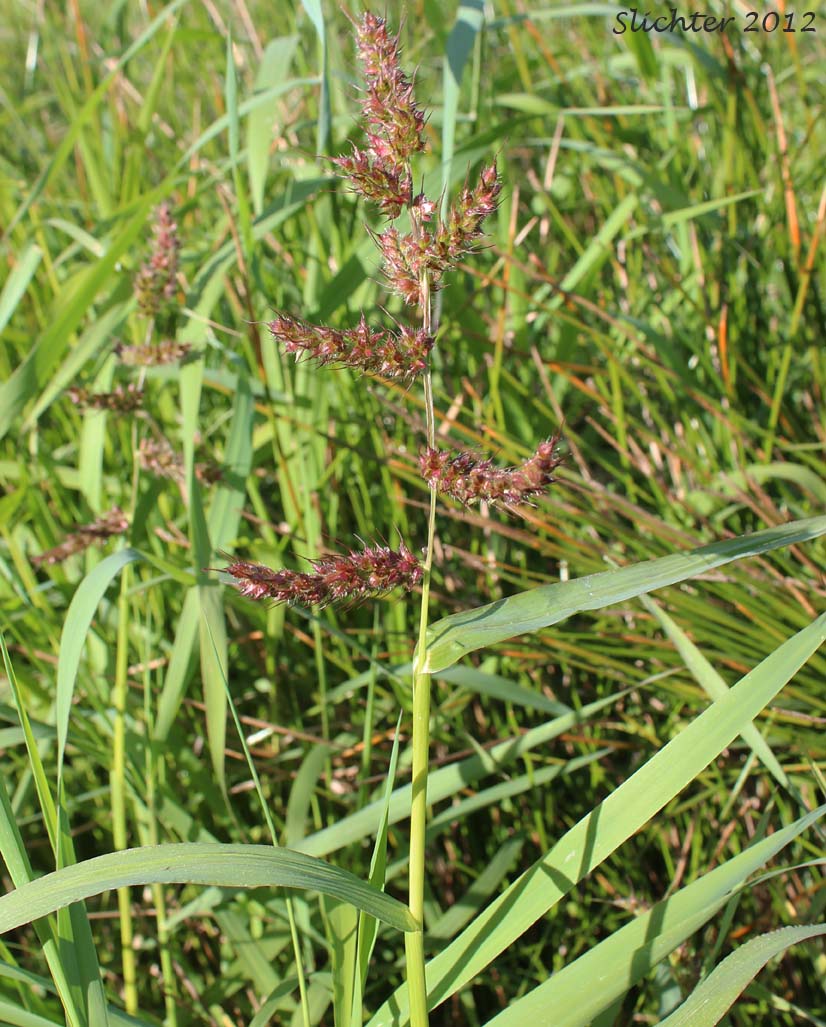
Jungle-rice, Jungle Rice, Small Barnyardgrass: Echinochloa colona (Synonym: Panicum colonum) - Introduced. Collected in Portland in 1909. Mentioned in "Survey of Wildflowers, Flowering Shrubs, Ferns and Grasses of the Columbia River Gorge" by Jolley and Kemp as being seen someplace west of Stevenson or Cascade Locks. It has short branches to 2 cm in length that do not branch further. The spikelets are 2-3 mm and awnless with elliptical upper lemmas. Either very uncommon or extirpated.
Barnyard Grass, Barnyard-grass, Barnyard Grass, Large Barnyard-grass: Echinochloa crus-galli (Synonyms: Echinochloa crusgalli, Echinochloa crus-galli ssp. spiralis, Echinochloa crus-galli var. crus-galli, Echinochloa crus-galli var. mitis, Echinochloa crus-galli var. occidentalis, Echinochloa occidentalis, Panicum crus-galli) - Introduced. Panicles with short side branches. Awnless or with long awns, the awns from 0-50 mm long. Fertile lemmas narrowing abruptly to a withering tip, the tip set off by a line of minute hairs seen at 25x.
American Barnyard Grass, Rough Barnyardgrass: Echinochloa muricata var. microstachya (Synonyms: Echinochloa crus-galli var. mitis, Echinochloa microstachya, Echinochloa muricata ssp. microstachya, Echinochloa muricata var. occidentalis, Echinochloa muricata var. wiegandii, Echinochloa occidentalis, Echinochloa pungens var. microstachya, Echinochloa pungens var. multiflora, Echinochloa wiegandii) - Native. Panicles with short side branches. Awnless or nearly so. If awns are present, they range from 0-6 mm , occasionally up to 10 mm. Fertile lemmas gradually tapering to a firm, stiff tip.